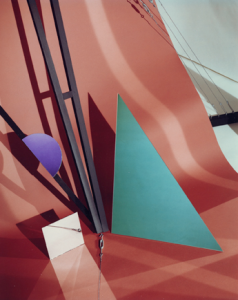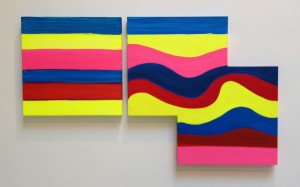
Allen Ruppersberg’s ‘What Should I Do?’ from 1988 poses a simple but often relevant question. It relates to his ‘70s autobiographical project ‘The Novel that Writes Itself’ for which he sold the parts of individual characters to people he knew. By the 80s, he hadn’t resolved the novel and in its place, began accumulating a series of short, unrelated texts like this one. Though only a few words, it assumes a lot: that the speaker has an audience, agency and options. With almost no means, this silkscreen on steel portrays a life in flux. (At Zach Feuer through August 3rd).



